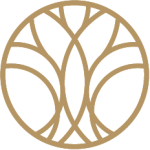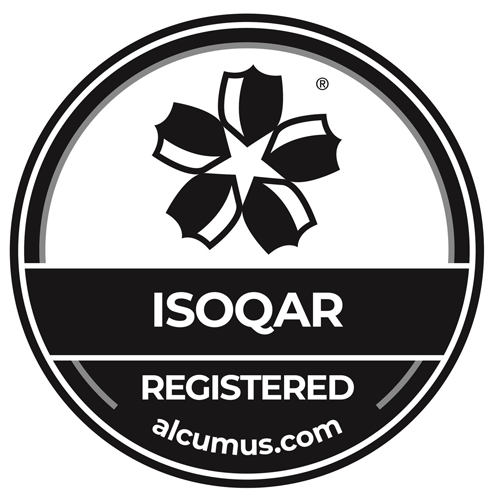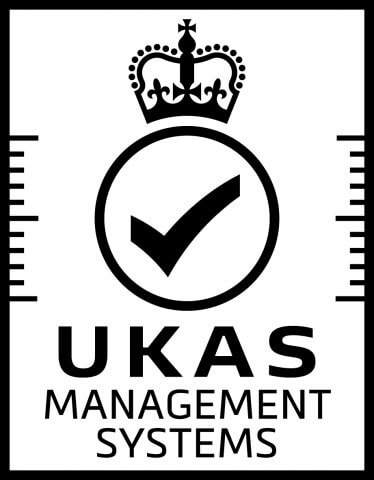Lap Band Surgery In Ireland
Reduce The Capacity Of Your Stomach and Lose Weight Efficiently!

Our Patients Are Happy With Their Weight Loss Results
The Benefits Of Lap Band Surgery
Day-case procedure
Very low risk
Fully reversible (preserves stomach and bowel)
significant and durable weight loss
Major reductions in obesity-associated health risks
Low risks of vitamin and mineral deficiency
How Does The LAP BAND Surgery Work?
PROCESS OF LAP-BAND® SURGERY
- The procedure involves using keyhole (laparoscopic) surgery to place a soft silicone ring around the top part of the stomach.
- The idea behind the Lap-Band® is to apply pressure to sensitive nerves at the top of the stomach which, when stimulated, induce the feeling of satiety (satisfaction) much earlier when eating.
- The Lap-Band® will gently squeeze the top part of the stomach inwards, resulting in the foods that you eat stimulating those nerves as they pass through the Lap-Band® and into the lower part of the stomach
BENEFITS OF THE LAP BAND®
- The greatest benefit of the Lap-Band® is that the pressure applied to the top of the stomach is fully adjustable to suit an individual’s needs.
- Over time, a Lap-Band® patient should be feeling satisfied much faster than before. Feeling satisfied earlier on whilst eating should result in the patient stopping eating their meals much earlier on, in other words, they eat smaller portions which results in weight loss.
- The Lap-Band® is attached to an injection port under the skin via a soft tubing, which allows adjustment of the Lap-Band® by injecting or removing saline (salt water) through the port.
Auralia's Holistic Care
We are a CHKS and ISO Approved Private Hospital in Ireland
Quick Procedure Booking
With Auralia Private Hospital, you don't have to wait months to get your Lap® Band done.
Ongoing Care & Support
Auralia will always be there for you after your weight loss procedure, whether with free additional appointments if needed or with expert advice.
Following your visit to Auralia, you will be given pre- and post-operative instruction to guide you on how to be well prepared for your Lap® Band and what to do afterwards. This will also contain the clinic's contact details.
You will also be given your Auralia Doctor’s emergency mobile number for calls after hours. During work hours, you should contact the hospital.
If you suspect anything is wrong outside of business hours, you are welcome to call the emergency number of your Doctor and speak with them directly, day or night.
Alternatively, you can drop straight into the clinic during working hours.
Absolutely not! You are entitled to as many appointments as you feel you need with your Doctor, following your Lap® Band.
Absolutely! From the time you have your Lap® Band with your Auralia Doctor, you are entitled to see them for appointments for as long as necessary.
If the Doctor no longer works for Auralia, you would still be entitled to see one of our surgeons for free.
- Have more questions or concerns?
Lap Band Cost In Ireland
Auralia can help you spread the investment of your surgery, allowing monthly payments over 24 or 36 months.
- Find out your custom surgery price
The Best Place For Your Lap Band In Ireland
UNMATCHED EXPERIENCE
23 years of experience and over 30,356 procedure performed.
AFTERCARE FROM YOUR HOME
We offer aftercare 24/7, from the comfort of your own home via the Auralia Aftercare App.
PERSONALIZED PLAN
We pay fantastic personal attention to details in order to craft your tailored Lap Bnad plan.
Not sure if the Gastric Band is the right option for you?
At Auralia we provide a wide range of other bariatric procedures tailored to each patient’s need
During your consultation, your surgeon will guide you towards the best option for your specific case
More Inspirational Stories of Our Patients!

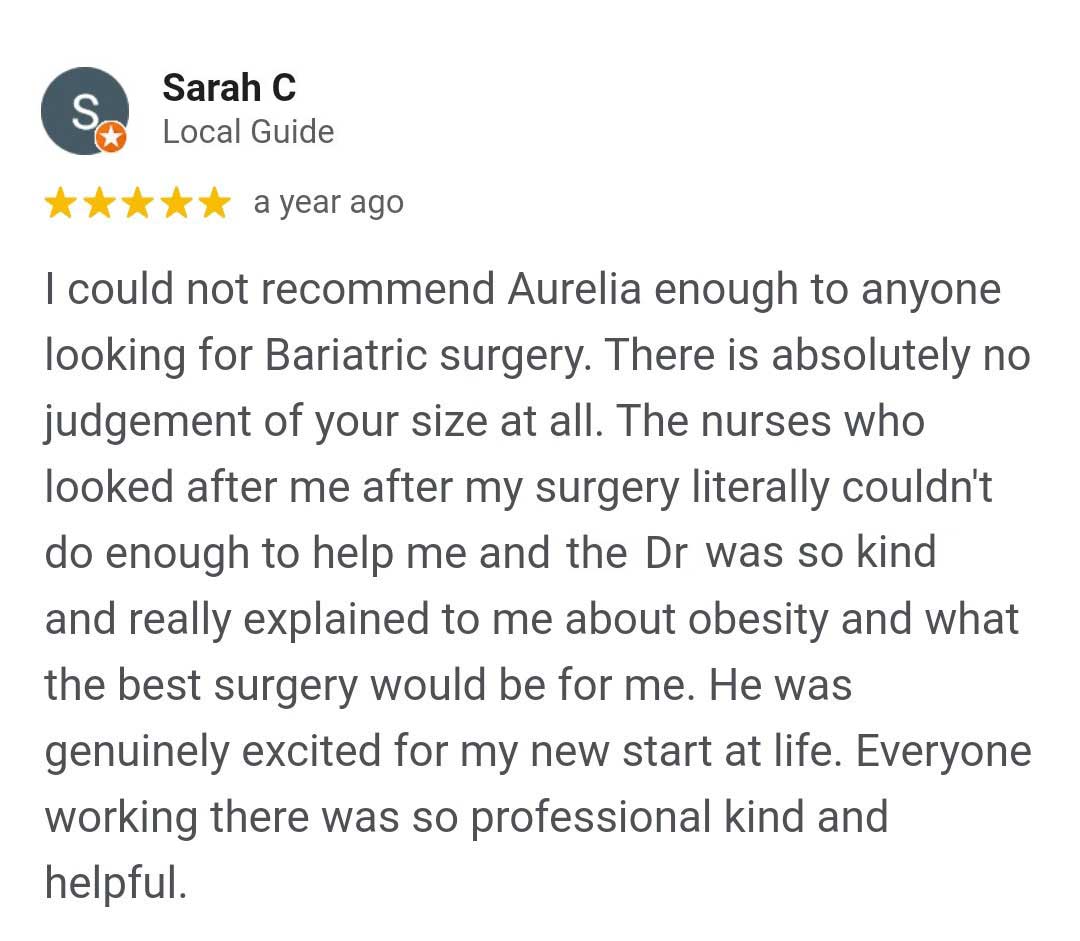
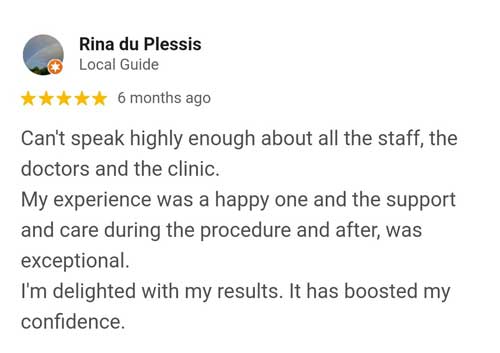
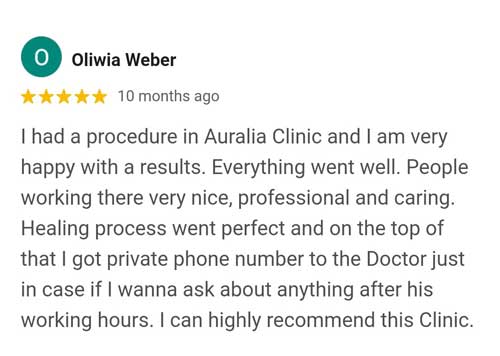

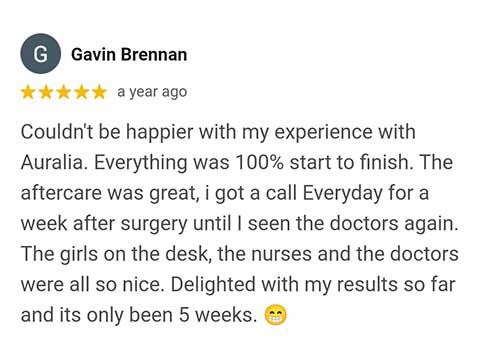
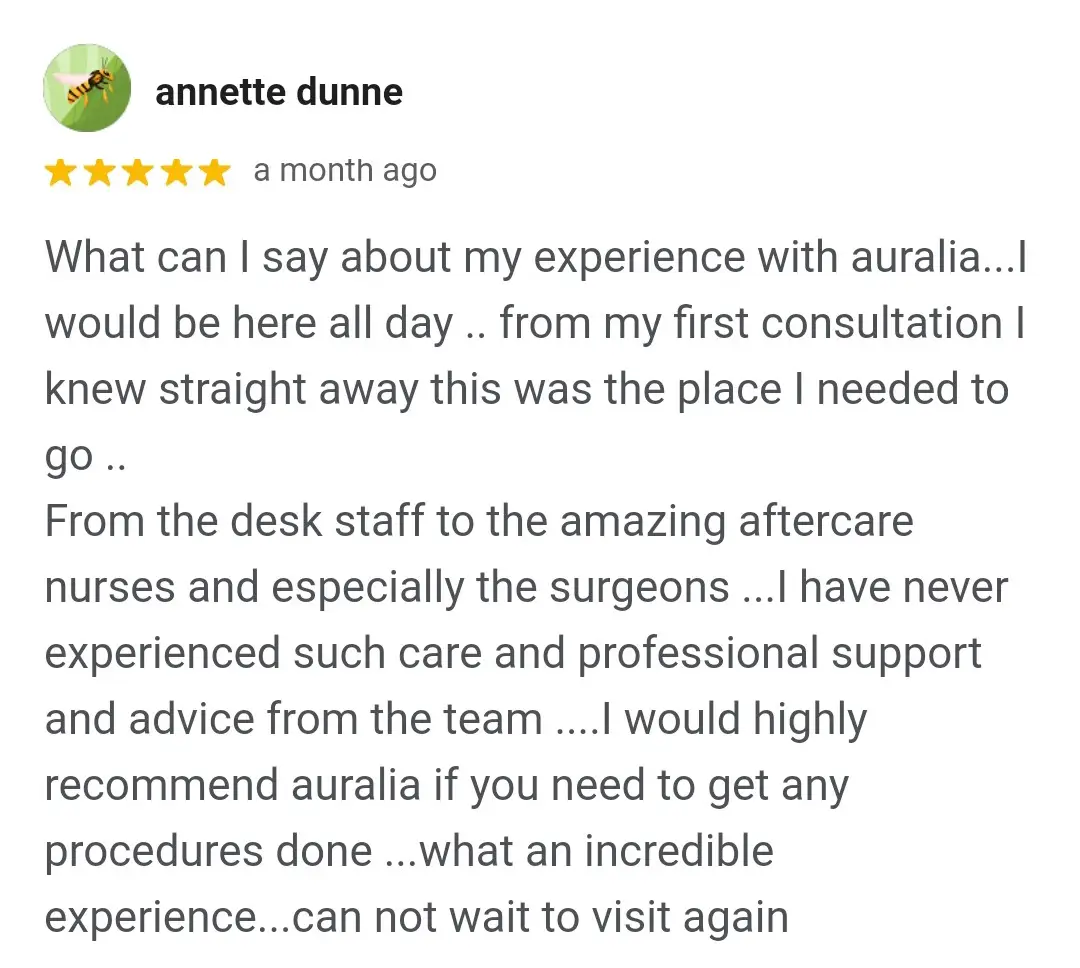
Meet Ireland’s Top Doctors
Lap Band FAQs
The Lap-Band® has an unparalleled safety record and has been used in weight loss surgeries for over 30 years.
The band is essentially a hollow silicone structure which is fitted around the upper part of the stomach so as to form a small “pouch” above the band. Adding fluid (saline) through the access port, tightens the band and restricts the amount of food which can pass through into the stomach.
The Lap-Band® has a lot of advantages:
● This surgery does not require any cutting or stapling of the stomach like other weight loss procedures, which means there are no permanent alterations, making it a very safe operation
● The Lap-Band® is completely reversible
● The risks involved with this surgery are much lower than that for other weight loss procedures
● The Lap-Band® is not associated with causing any vitamin or mineral deficiencies
● The surgery usually takes less than 45 minutes to complete. A faster surgery means a faster recovery. Less time in theatre means lower risk to the patient.
Many people think the band is meant to stop them eating, but this is wrong.
The band actually works by producing satiety (a feeling of fulness), so you feel as though you have had enough even after eating only small amounts. How does this happen?
It happens because in the stomach wall beneath the band there are specialised nerve fibres.
When food enters the pouch, the fibres are stimulated and send a message to the appetite centre in the brain – which produces a sensation of satiety. Feeling full after only small amounts of food means you will eat less – and lose weight.
The gastric band operation is performed laparoscopically (also known as key-hole surgery) under a general anaesthetic.
The operation takes just 45 minutes and patients usually return home on the same day. Generally, 3-5 small incisions are made in the abdominal wall, through which surgical instruments can be passed. The band is then placed around the upper part of the stomach, about 2cm below where the oesophagus (gullet) joins the stomach. The procedure does not involve any cutting of the stomach or bowel and only a few sutures (stitches) are applied to keep the band in place. This means that the procedure is fully and relatively easily reversible.
Following gastric band surgery, you should spend the first few days resting at home, but light work is usually possible after that. Whilst some people return to work after a few days, we think it is prudent to take a full week away from work to recover. At the end of this period it should be quite safe to drive.
Incisions made during surgery are sutured and/or glued and the wounds normally heal within 10-14 days. The scars will tend to fade gradually, though some patients find it helpful to apply a silicone scar-reduction gel.
It’s important to start working with your band soon after surgery – you can start walking almost immediately. You should also stick closely to the nutritional guidelines with which you will be provided.
Remember – this is the beginning of a new chapter in your life!
The main advantage of the Lap-Band® is its adjustability. The Lap-Band® can be tightened or loosened in a matter of minutes in our clinic. The surgery itself is minimally invasive, only taking around 35-45 minutes to complete. There is minimal scarring with very small incisions made. The stomach itself remains fully intact, along with the full digestive system. Unlike other obesity surgeries, the Lap-Band® is fully reversible. Should anybody wish to have the Lap-Band® removed, they will be left with a fully intact stomach and gastrointestinal tract.
Some other advantages of the Lap-Band® include:
● Very low risk
● Significant and durable weight loss
● Fully reversible (preserves stomach and bowel)
● Day-case procedure (usually)
● Proven studies show significant and durable weight loss
● Major reductions in obesity-associated health risks
● Low risks of vitamin and mineral deficiency
Some disadvantages of the Lap-Band® can include:
● Requires relatively regular attendance for adjustments (several times a year)
● Unlike sleeve or bypass, the Lap-Band® does not reduce appetite hormones
● Complications (though usually very minor) are slightly more common than other procedures.
● Health benefits are entirely dependent on weight-reduction
● Experience of the surgeon directly influences the risk of long-term
complications.
● Can sometimes be a problem for those who do a lot of overseas travel
Auralia surgeons have carried out thousands of surgeries, and they are the top experts of Ireland
To be eligible for Lap-Band Surgery:
● Your age should be +18
● Your BMI should be 30 kg/m2 or higher
Before you’re approved for Lap-Band Surgery, you’ll also have to complete a surgical, medical, psychological, and dietary evaluation.
If you have any questions about eligibility, feel free to get in contact with our team today.
4-5 weeks after surgery
Based on the experience from past patients, the average weight loss is around 1.5 stone or 8% of your starting weight.
Long-term weight loss
Lap-Band® weight loss results vary from patient to patient. It largely depends on how well you follow the given guidelines regarding the foods you eat, exercise habits and working with your Lap-Band® to maximise your results. You should lose about 50-60% of your excess weight over the first two years. This is only an average – some people might lose more or less, depending on their own effort levels.
Gastric banding has a major, often dramatic, impact on a wide variety of obesity associated conditions. Only a surgical intervention can provide such a sustained reduction in health risks, improve quality of life and protect against premature death and disability.
Some of the health benefits of band-associated weight loss are:
- Cardiovascular disease – reduced risk of heart attack and stroke (due to lower blood pressure and cholesterol levels)
- Type 2 diabetes – complete resolution or major improvement in the majority of Type 2 diabetics
- Sleep apnoea – resolution or marked improvement in snoring, daytime sleepiness and fatigue
- Reflux (heartburn) – the band is an effective anti-reflux device in most patients
- Back and joint pain – most of band patients experience dramatic reductions in back and joint pain and markedly improved mobility
- Stress incontinence – is common in female band patients who can expect significant improvement or complete resolution of symptoms
- Infertility and PCOS – most patients with polycystic ovarian syndrome (PCOS) experience correction of underlying hormonal problems and restored fertility
- Asthma – asthmatic patients see marked improvement in symptoms and a reduction in asthma medication
- Fatty liver – 80% of patients will have complete resolution of obesity-associated fatty liver disease
- Psychological wellbeing – reduced depressive symptoms and anxiety, improved social interaction and overall quality of life
The above list is not exhaustive, but it accounts for the fact that band patients have – on average – a 60-70% lower risk of premature death when compared with their obese (non-banded) peers.
In summary, the band improves or resolves a range of obesity-associated weight problems, enhances social and psychological functioning and reduces the risk of premature death and disability. Not many procedures anywhere in medicine can offer such a remarkable list of benefits!
When your Lap-Band® is implanted, it will usually contain minimal fluid. At this point, the focus is on recovery. About 5 weeks post-surgery, we can begin adjusting your Lap-Band® to help control your hunger and improve your weight loss.
Adjusting your Lap-Band® will also depend on how well you’re doing. If you are losing about 1-2lbs (0.5-1 kg) a week, have no issues and feel well, you’re doing fine. If your weight loss is very slow or if you have a little feeling of satiety, you may need a further adjustment. There is considerable variation in how many adjustments are required in the first 12 months. Some need one, others need five or six. But remember, more is not necessarily better. Some people think if their Lap-Band® is producing good weight loss, tightening it further will give more dramatic results. This is not true. An over-adjusted Lap-Band® can be dangerous, increasing the chance of slippage and other complications.
This is a myth. The Lap-Band® does not cause reflux (heartburn) or make existing heartburn worse. In fact, in many cases, it can improve symptoms for patients. The exception to this, however, is when a Lap-Band® is over-tightened. Reflux can become common in this scenario and quite distressing. Any patient who is getting persistent reflux with their Lap-Band® should have it loosened as soon as possible.
Major vitamin and mineral deficiencies are very uncommon with the Lap-Band®, but it is still recommended that you take your daily vitamin and mineral supplements.
One of the unique features about the Lap-Band® is that it is completely reversible. This means if you want to have a different kind of surgery and need the Lap-Band® removed, it is possible.
Some surgeries like conversion to a gastric bypass can even be done at the same time as the Lap-Band® removal.
As with any form of surgery, there are potential risks and complications associated with gastric band surgery, they include:
- Hemorrhage / bleeding
- Adverse reactions to anesthesia and/or medication
- Blood clots – deep vein thrombosis (legs), pulmonary embolus (lungs)
- Infection
However, in the hands of an experienced bariatric team, these risks are remarkably low.
Short term post-surgery effects (first 7-days)
Typical side-effects immediately after surgery include:
- Left-shoulder pain (common after any laparoscopic procedure in which gas is introduced into the abdominal cavity)
- Minor soreness over the wound areas, with associated mild swelling/bruising
- Some discomfort taking a deep breath
- Mild nausea following the anaesthetic (uncommon).
However, most patients do not find the post-operative period difficult and these symptoms are usually short-lived. Pain is easily controlled with paracetamol and/or co-codamol.
Long-term complications
Several longer-term complications can occur with gastric bands, but fortunately the most frequent of these are the ones which are most easily remedied – often without surgery. They include;
- Retching / vomiting
- Band slippage
- Band erosion
- Pouch enlargement
- Access port or tubing leaks
- Have more questions or concerns?
